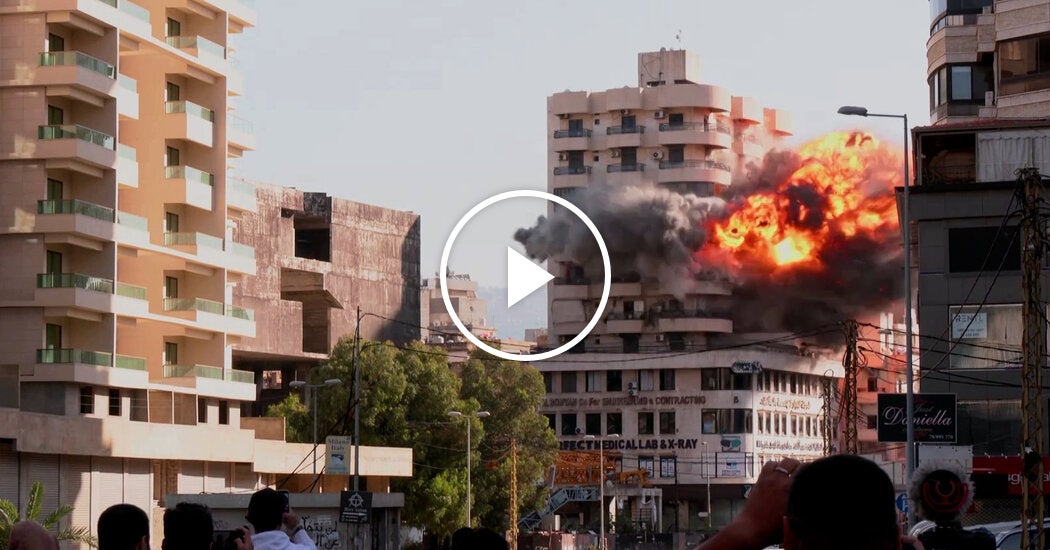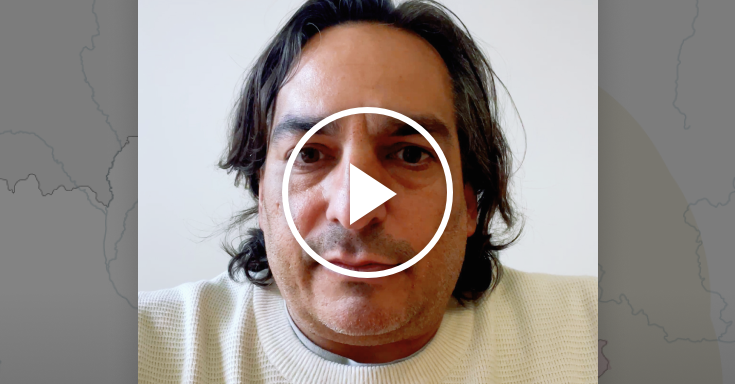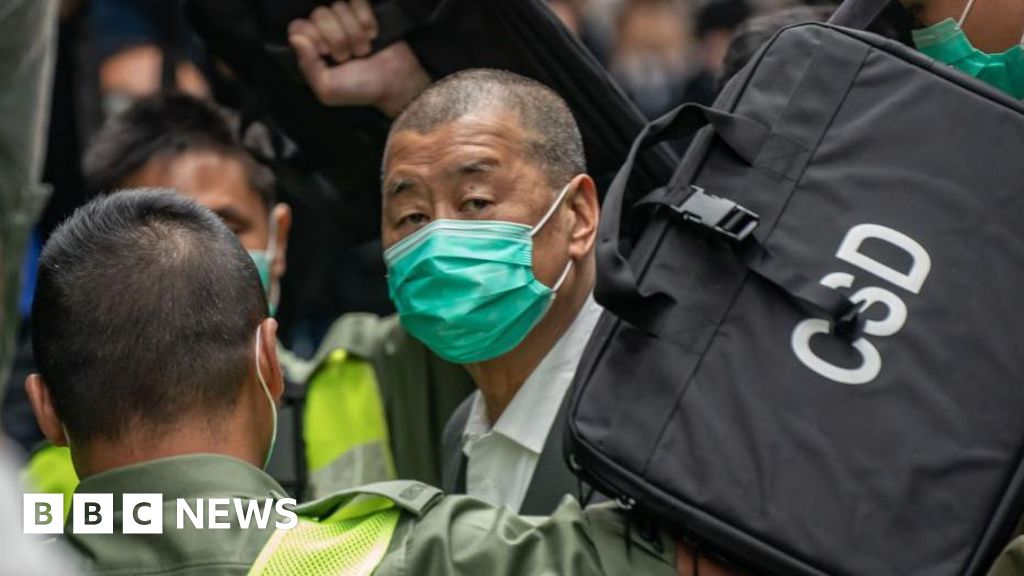They arrived just before midnight, carrying machetes and hoes, hammers and sickles, with plans to seize the land.
When the 200 activists and farm workers got there, the ranch was vacant, overgrown with weeds, and the farm headquarters empty, except for a stray cow.
Now, three months later, it is a bustling village. On a recent Sunday, children rode bicycles on new dirt paths, women tilled soil for gardens and men pulled tarps onto shelters. About 530 families live at the encampment in Itabela, a town in northeast Brazil, and they have already joined together to plow and plant the field with beans, corn and cassava.
The siblings who inherited the 370-acre ranch want the squatters gone. The new tenants say they aren’t going anywhere.
“Occupation is a process of struggle and confrontation,” said Alcione Manthay, 38, the effective leader of the encampment, who grew up on several like it. “And there is no settlement if there is no occupation.”
Ms. Manthay and the other uninvited settlers are part of the Landless Workers Movement, perhaps the world’s largest Marxist-inspired movement operating within a democracy and, after 40 years of sometimes bloody land occupations, a major political, social and cultural force in Brazil.
The movement, led by activists who call themselves militants, organizes hundreds of thousands of Brazil’s poor to take unused land from the rich, settle it and farm it, often as large collectives. They are reversing, they say, the deep inequality fed by Brazil’s historically uneven distribution of land.
While leftists embrace the cause — the movement’s red hats depicting a couple holding a machete aloft have become commonplace at hipster bars — many Brazilians view it as communist and criminal. That has created a dilemma for the new leftist president, Luiz Inácio Lula da Silva, a longtime movement supporter who is now trying to build bridges in Congress and the powerful agriculture industry.
Across Latin America, other movements inspired by the tenets of Marxism — workers rising up in a class struggle against capitalism — have sought to tackle systemic inequities, but none have ever approached the size, ambition or sophistication of Brazil’s landless movement.
Group organizers and outside researchers estimate that 460,000 families now live in encampments and settlements started by the movement, suggesting an informal membership approaching nearly two million people, or almost 1 percent of Brazil’s population. It is, by some measures, Latin America’s largest social movement.
Under Brazil’s former right-wing president, Jair Bolsonaro, the movement lost steam. Occupations largely stopped during the pandemic and then returned slowly in the face of opposition from Mr. Bolsonaro and farmers who became more heavily armed under his more permissive gun policies.
But now, emboldened by the election of Mr. Lula, a longtime political ally, the movement’s followers are ratcheting up their land seizures.
“We elected Lula, but that’s not enough,” João Pedro Stédile, a movement co-founder, said in a message broadcast to members on Easter Sunday, announcing a “Red April” push to invade new land.
There have been 33 occupations in less than four months of Mr. Lula’s presidency, including eight in one weekend this month. Under Mr. Bolsonaro, there were about 15 occupations a year, according to government statistics. (About two decades ago, when land was even less equally distributed, there were hundreds of invasions a year.)
Mr. Lula has said little about the new invasions, though two of his cabinet ministers have criticized them.
The new occupations have given rise to a countermovement: “Invasion Zero.” Thousands of farmers who say they do not trust the government to protect their land are organizing to confront squatters and remove them, though so far, there has been little violence.
“No one wants to go into battle, but no one wants to lose their property either,” said Everaldo Santos, 72, a cattle rancher who leads a local farmers’ union and owns a 1,000-acre ranch near the Itabela encampment. “You bought it, paid for it, have the documents, pay the taxes. So you don’t let people invade and leave it at that,” he said. “You defend what’s yours.”
Despite the landless movement’s aggressive tactics, the Brazilian courts and government have recognized thousands of settlements as legal under laws that say farmland must be productive.
The proliferation of legal settlements has turned the movement into a major food producer, selling hundreds of thousands of tons of milk, beans, coffee and other commodities each year, much of it organic after the movement pushed members to ditch pesticides and fertilizers years ago. The movement is now Latin America’s largest supplier of organic rice, according to a large rice producers’ union.
Still, opinion surveys have shown that many Brazilians oppose the movement’s land occupations. Some of the movement’s more militant members have invaded active farms run by large agribusinesses, destroyed crops and even briefly occupied the family farm of a former Brazilian president.
On the ground, the conflict pits hundreds of thousands of impoverished farm laborers and a network of leftist activists against wealthy families, large corporations and many small family farms.
Conservative lawmakers accused Mr. Stédile, the movement co-organizer, of inciting crimes with his call for new occupations, and have opened a congressional investigation.
The day after Mr. Stédile called for invasions, he joined Mr. Lula on a state visit to China. (The government brought representatives of several large food producers.)
Mr. Lula has long had close ties to the movement. Brazil’s first working-class president, he supported it in his first administration two decades ago. Later, while he was imprisoned on corruption charges that were later thrown out, movement activists camped outside the jailhouse for his entire 580-day incarceration.
The inequity over land ownership in Brazil is rooted in colonial-era land-distribution policies that consolidated land in the hands of powerful white men.
The government has sought to tilt the balance by essentially confiscating arable, unused land and giving it to people who need it. The landless movement has sought to force such reallocations by occupying unproductive land.
Bernardo Mançano Fernandes, a São Paulo State University professor who has studied the movement for decades, said the government has legalized about 60 percent of the movement’s occupations, a rate he attributed to organizers’ success at identifying unused land.
But critics say the government is encouraging invasions by rewarding squatters with land, instead of forcing them to get in line, like others who must go through bureaucratic channels to apply for property. Movement leaders say they seize land because the government does not act unless pressured.
That is what the people camped in Itabela are hoping for.
The encampment’s residents had varied paths but all shared the same goal: their own slice of land. A homeless man arrived with his belongings in a wheelbarrow. A middle-aged couple abandoned a shack on the farm where they worked, for a chance at their own. And newlyweds making minimum wage decided to squat because they thought they would never be able to afford to buy land.
“The city is not good for us,” said Marclésio Teles, 35, a coffee picker standing outside the shack he built for his family of five, his disabled daughter in a wheelchair beside him. “A place like this is a place of peace.”
That peace nearly ended a few weeks ago.
The siblings who inherited the land from their father in 2020 successfully petitioned a local judge to order the encampment dismantled. They argued that the land was productive and therefore should not be turned over to the occupiers. Movement activists admitted there were still some cattle on the land, which they were trying to keep away from their new crops.
The police went to evict the settlers, joined by dozens of angry farmers, and were met by about 60 encampment residents, some carrying farm tools.
Instead of a fight, however, the residents resisted by singing landless movement hymns, Ms. Manthay said. The police, worried about a clash, paused the eviction.
The movement’s lawyers have since appealed and asked for a permanent settlement on more than 2,000 acres the siblings own. A state agency has said the government should analyze the movement’s claims. The case is still pending.
“If they remove us, we’ll occupy again,” Mr. Teles said. “The struggle is constant.”
About 90 minutes down the road, there is a window into what the future could be: a 5,000-acre settlement that was ruled legal in 2016 after six years of occupation. The 227 families there each have 20 to 25 acres, spread across rolling hills of farmland and grazing cattle. They share tractors and plows, but otherwise farm their own parcel. Together they produce roughly two tons of food a month.
Daniel Alves, 54, used to work in someone else’s fields before he began squatting on this land in 2010. Now he grows 27 different crops on 20 acres, showing off bananas, peppercorns, bright pink dragon fruit and the Amazonian fruit cupuaçu — all organic. He sells the produce at local fairs.
He said he remained poor — his shack was lined with tarps — but was happy.
“This movement takes people out of misery,” he said.
His granddaughter, Esterfany Alves, 11, followed him around the farm, petting their donkey and picking ripe fruit. She attends a public school on the settlement partly run by the movement, one of roughly 2,000 movement schools across Brazil.
The schools make protests part of the curriculum and teach students about farming, land rights and inequality.
In other words, Esterfany said, the school had taught her “about the struggle.”
Flávia Milhorance and Lis Moriconi contributed reporting from Rio de Janeiro.










